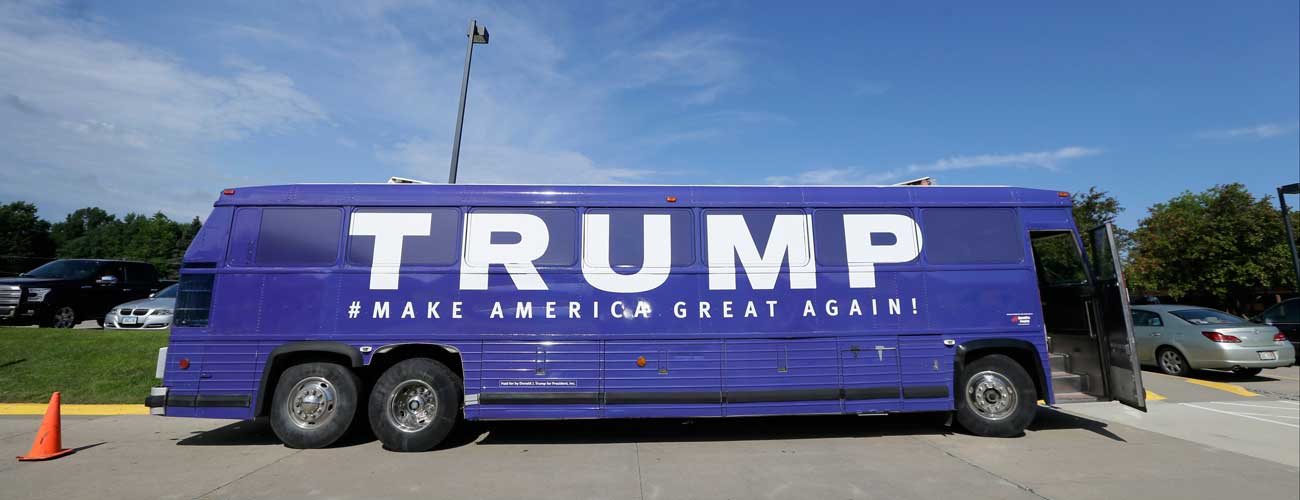Sign up for The Media Today, CJR’s daily newsletter.
In The Boys on the Bus, Timothy Crouse famously portrayed the traveling press corps for the 1972 presidential campaign as a pack, too often with interchangeable vantage points, sources, and, therefore, stories. That year, Rolling Stone’s Hunter S. Thompson utilized a new gadget to file remotely: the fax machine. Forty-three years after Nixon vs. McGovern, the bubble “on the bus” remains, though the bus itself has changed.
More than a year before the 2016 election, only Hillary Clinton has a robust enough operation to offer a press bus. Traveling with candidates is enormously expensive, and with more than 20 candidates to cover and a front-loaded primary season, media outlets are taking mixed approaches. Organizations such as the AP and The Washington Post often assign reporters to bounce among several candidates—the number of true “embeds” seems down compared with other years, reporters there say, though that may change as campaigns gather steam. The Huffington Post will pick its spots for drop-in coverage, rather than embed with any one candidate for an extended stretch. “I think there’s obvious benefits on the bus that we’re forfeiting,” HuffPost Political Editor Sam Stein said. “On the flip side, we won’t have the risk of succumbing to a bubble mentality.” That bubble is only more confining with tighter Web deadlines that limit chances to roam the crowds and chat with locals. And, with Twitter-minded journalists quick to pounce on gaffes, flubs, and tiffs, campaigns have grown increasingly guarded. For digital natives like BuzzFeed, whose politics desk has expanded to 15, including six full-time campaign correspondents who work on the road and in home offices, the investment in being there may have more to do with branding than with enabling original reporting.
Organizations that pass on permanently assigning a reporter to a candidate could be seen as rejecting pack groupthink, or simply piggybacking on it from a distance. For a July trip to the US-Mexico border, Donald Trump commissioned two coach buses to accommodate more than 100 journalists. Expense and originality aside, some spectacles are apparently too great to pass up.
Has America ever needed a media defender more than now? Help us by joining CJR today.



